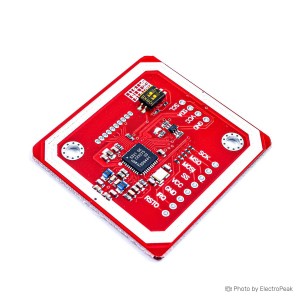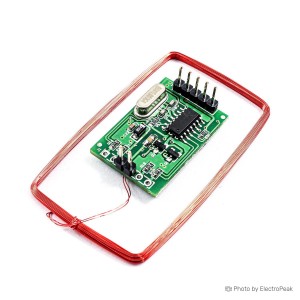The range of an RFID reader varies depending on the type and frequency. Low-frequency readers typically have shorter ranges, suitable for close proximity, while UHF readers can achieve longer ranges, making them ideal for logistics and tracking applications.
RFID Modules
RFID Reader/Writer Modules
An RFID (Radio-Frequency Identification) reader/writer is a device that interacts with RFID tags or cards. It wirelessly communicates with the tags, reading and often writing data to them. RFID technology is widely used for identification, access control, and tracking applications.
Price of RFID Reader/Writer Modules
RFID reader/writer prices vary based on features and capabilities. Basic models are affordable, while advanced readers with additional functionalities may cost more. Consider your specific requirements when choosing an RFID reader/writer.
Types of RFID Reader Modules
When it comes to RFID readers, several types cater to different applications.
LF (Low Frequency) RFID Readers:
LF RFID readers, operating at frequencies around 125 kHz, are commonly employed for short-range applications such as access control. Notable models include the RDM6300, EM4100 and T5577, known for their reliability and compatibility with various LF RFID tags.
HF (High Frequency) RFID Readers:
HF RFID readers, functioning at approximately 13.56 MHz, are versatile devices used in applications like NFC-enabled devices and smart cards. Popular models like RC522, PN532, MIFARE Classic or DESFire are well-regarded for their performance in contactless communication.
UHF (Ultra-High Frequency) RFID Readers:
UHF RFID readers, operating in the frequency range of 860-960 MHz, offer extended reading ranges suitable for logistics and inventory tracking. Models like Impinj R2000 or Alien ALR-9680 exemplify the capabilities of UHF RFID readers in managing large-scale RFID deployments.

Multi-Protocol RFID Readers:
Multi-protocol RFID readers, such as Impinj Speedway R420 or ThingMagic Sargas, provide flexibility by supporting various RFID protocols. This versatility makes them ideal for environments with diverse tag types, offering seamless integration and compatibility.
Integrated RFID Readers:
Integrated RFID readers combine RFID functionality with microcontrollers, simplifying integration for DIY projects. Notable examples include the Arduino RFID/NFC Shield and SparkFun Simultaneous RFID Reader, catering to enthusiasts and developers looking to incorporate RFID capabilities into their projects. Each type serves specific purposes, addressing different ranges and applications within the RFID ecosystem.
How do RFID work?
RFID readers use radio frequency technology to communicate with RFID tags. When a reader sends out a signal, it activates the tag, allowing it to transmit data back to the reader. This technology enables quick and contactless identification in various applications.
What is the range of an RFID reader?
Can RFID readers write data to RFID tags?
Yes, many RFID readers have read and write capabilities. This feature is valuable for applications where data on the RFID tag needs to be updated or modified, such as in inventory management or access control systems.
Are RFID readers compatible with multiple RFID tag types?
In general, passive RFID tags, whether LF, HF, or UHF, are designed to be compatible only with the corresponding type of passive RFID reader. For example, an LF reader is typically configured to read LF tags exclusively and would not be able to read HF or UHF tags. This segregation ensures that each RFID tag is appropriately matched with the compatible reader technology for effective communication.
Can RFID readers read multiple tags simultaneously?
In technical terms, RFID readers typically communicate with one tag at a time. When multiple tags transmit signals simultaneously, the reader faces challenges in distinguishing between them. However, anti-collision algorithms come into play to facilitate the singulation process. This allows the reader to engage with specific tags in rapid succession, creating the illusion of simultaneous interrogation of multiple tags.
Do RFID readers require a power source?
RFID transponders fall into two categories: active and passive, determined by their communication method with RFID readers. Passive transponders operate without a power source, while active transponders employ an internal power source to enhance signal transmission between the transponder and the reader. This distinction impacts aspects like reading distance and operational capabilities, tailoring each type to specific applications and requirements.
Differences between passive and active RFID
Unlike passive tags without an internal power source, active RFID tags feature their own battery and internal transmitter, typically in the form of a beacon or transponder. This enables active tags to continuously transmit signals to an RFID reader, reaching distances of up to 150 meters, contingent on frequency levels.
How secure are RFID readers and tags from unauthorized access?
RFID systems can incorporate security features such as encryption and authentication to prevent unauthorized access. Implementing best practices and selecting secure protocols enhances the overall security of RFID systems.


